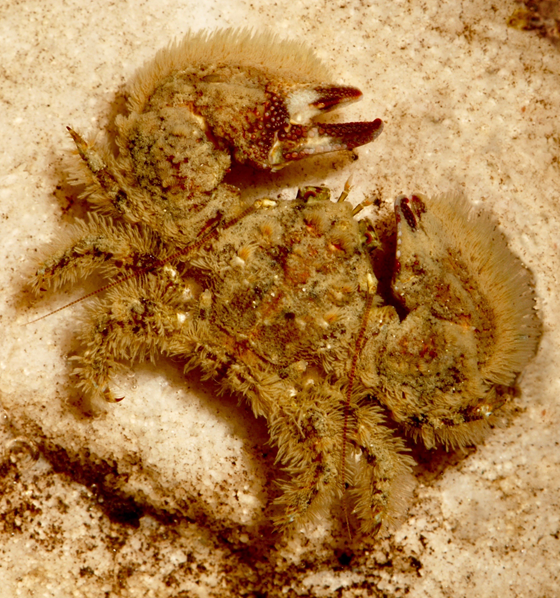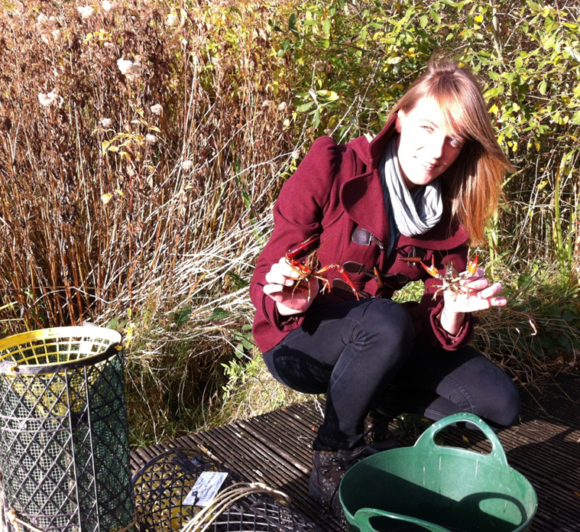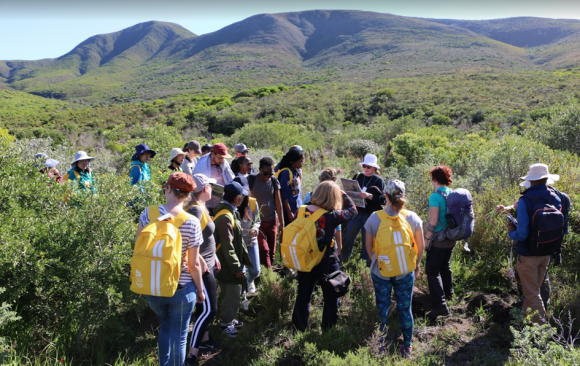11 June 2018 | By Charles Griffiths
Most Porcelain crabs are tropical, so Prof George Branch was surprised to find a species he has never seen before under boulders in the cold waters of Saldanha Bay, a site he has sampled regularly over several decades. C·I·B Core Team Member Prof Charles Griffiths and C·I·B supported honours student Selwyn Roberts, both from the University of Cape Town, set out to identify the species and to survey its local population.

(Photograph by GM Branch)
The results have just been published in the journal Bioinvasions Records.
To crack this problem, the authors approached an international team, including well-know crab taxonomist, Rafael Lemaitre, from the Smithsonian Institution in Washington DC and genetics experts, Korbinian Eckel and Christoph Schubert, from Germany. By comparing the Saldanha samples to specimens held in the Smithsonian and by comparing their DNA to those of other related species, the authors were able to prove that the Saldanha samples represented Porcellana africana, a rarely seen species native to NW Africa.
The newly recorded species appears to be a recent shipping introduction from NW Africa, probably carried to Saldanha Bay on the hull of a ship, or in ballast water pumped from a bulk carrier. Since regular marine surveys are undertaken in Saldanha Bay, the introduction can be placed as having occurred between 2012 and 2014. The new invader is now extremely common in the Bay, with populations reaching nearly 1000 crabs per metre of shoreline in some sites.
The ecological impacts of the newly reported crab have not yet been investigated, but it is a small species of only about 1 cm body length and is not predatory, instead filtering organic particles from the water with its hairy antennae. It is likely, though, that it could be used as a food resource by local shorebirds and coastal fishes. The invasion may also still be in its early stages and the crab may become far more abundant when it might then cause other problems. It may also spread to other sites in future, so its populations should be monitored. To date it has not been observed outside of Saldanha Bay, or in other regional harbours.
Charles Griffiths explains: “This is one of several new marine invasions that have been detected in Saldanha Bay over recent years and shows that we need to remain vigilant if we are to detect such species before they spread throughout the region. The intertidal zone along the West Coast is already dominated by invasive mussels and barnacles and we should try to nip other invaders in the bud, when we still have some chance of controlling them.”
The full paper can be viewed at: Griffiths, C. L., Roberts, S., Branch, G. M., Eckel, K., Schubart, C. D., & Lemaitre, R. (2018). The porcelain crab Porcellana africana Chace, 1956 (Decapoda: Porcellanidae) introduced into Saldanha Bay, South Africa. Bioinvasions Records 7
For more information contact, Prof Charles Griffiths at charles.griffiths@uct.ac.za



